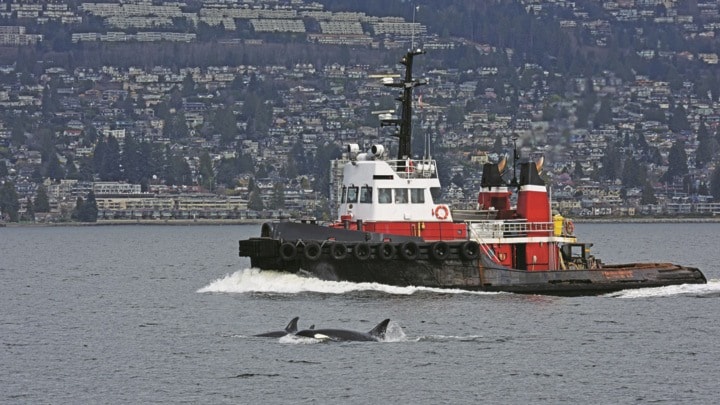Whales and large vessels tend to share the same path coming in and out of the harbour, and to reduce incidence of collisions, a guide for mariners was produced with the expertise of a Prince Rupert-based marine mammal researcher.
“We talk about slowing down. Research has shown that in areas of high density of cetaceans, if we slow vessels down to 10 knots or so, we can greatly reduce the chance of ship strikes,” said Caitlin Birdsall, who works for the Vancouver Aquarium’s Coastal Ocean Research Institute.
The Mariner’s Guide to Whales, Dolphins and Porpoises of Western Canada focuses on minimizing disturbance of cetaceans — whales, dolphins, porpoises with torpedo shaped bodies.
With the expansion of the Port of Prince Rupert, which will increase vessel activity in the harbour, the guide offers suggestions to reduce vessel strikes, noises that interrupt natural behaviours and air pollution.
“There’s actually been some research done that shows because whales don’t have sinuses like we do. They have very little filters. They inhale anything that is sitting on the water depending on weather conditions and distance, that can mean that they’re inhaling large amounts of certain gases,” Birdsall said.
Vessel and noise maintenance is already imposed through regulations by the International Maritime Organization but the guide refers back to the importance of maintaining the vessel’s hull and props to reduce underwater noise.
Misconceptions are also debunked in the guide. Cetaceans will not always move out of the way of a large vessel. The guide provides maps to show the areas where there are higher densities of cetaceans — which also happens to be where vessels are coming in to port.
“We have very little data about large vessel strikes in B.C. and it’s not because it doesn’t happen. They’re such big vessels that it’s very easy for them not to know,” she said.
On occasion, a large vessel will come into port with a whale wedged in the bulbous bow of the vessel. Often, when a cetacean is found dead along the coast and a necropsy is performed, there is evidence of blunt force trauma.
Birdsall recommends gradual course changes away from groups of cetaceans and to maintain course and speed if porpoises are riding the wake of the ship. Research on the East Coast of the U.S. on North Atlantic right whales demonstrated that when slowdown zones were imposed, mortality from vessel strikes decreased by 80-90 per cent.
The guide was inspired by an East Coast version. The Vancouver Aquarium, Port of Vancouver and the Port of Prince Rupert partnered for over one year to produce a West Coast guide. An advisory committee was created to cover the type of information that would be useful to the target audience: BC Ferries, BC Coast Pilots, operators of large container ships and cruise ships.
“The health of the ocean is integral to our success as a gateway for maritime trade. Close teamwork by partners that share this perspective helped make this project a success, and lays the foundation for future, similarly positive, initiatives,” said Jason Scherr, manager of Environmental Sustainability for the Port of Prince Rupert.
The 62-page guide was distributed to B.C. Ferries, commercial vessel captains and professional mariners in February.
To learn more about how to report a vessel strike with a cetacean, or about marine species in the harbour and how to minimize disturbing their habitat, the guide is available online.
